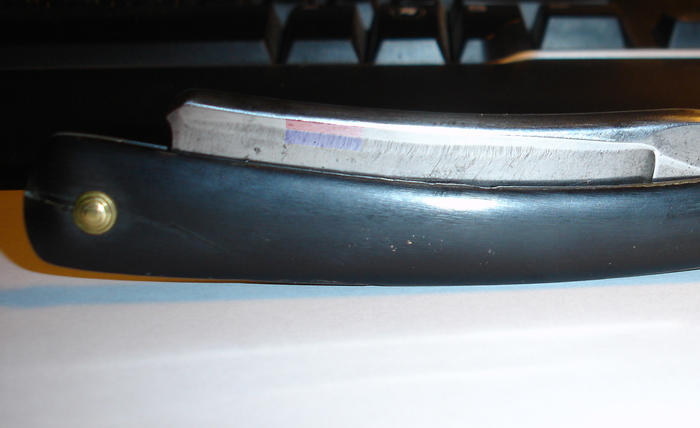Results 1 to 10 of 66
Hybrid View
-
08-23-2011, 02:11 PM #1

Hi, roughtype,
Thank you!
I bought a box of hard brass shim stock long ago in a past life as a machinist. They make it in stainless steel too. A local small machine shop would have the shim stock to cadge a piece from. An old steel can could do the job well and is thin enough to work for most blades.. Aluminum may load the hone quickly
An advantage to shim stock is that it is available in thicknesses from ~0.ooo5 to 0.o5o
Since most every blade is different, they are a one off for each.
I just use a pair of sheet metal pliers called seamers at HF.to form the clip and then trim it with a scissors.

Vise Grip and other makes of seamers and welding pliers are available. Make sure that the jaws meet exactly. I usually end up filing them to a match at the edge. It will take a bit of practice and then, you will be able to gauge the correct spacing and seal the clips onto the spine tightly. I squeeze them onto the blade below the spine if it is a hollow grind. Just assure that the spine hits the hone; not the edge of the clip.
If you notice the hone wear on the clip in the photo a couple posts back, you will see where the hone meets the covered spine and the clip is formed around the spine and into the hollow.
enjoy!Be yourself; everyone else is already taken.
- Oscar Wilde
-
The Following User Says Thank You to Geezer For This Useful Post:
roughkype (08-23-2011)
-
12-10-2011, 08:03 PM #2

Bringing back an old thread... I was wondering about this too. On both of my old near wedges (~150 yrs old) theres some gnarly hone wear, but it sits above the surface of the hone if you lay the razor flat (it is in the concave region). On the photo, the red spot is the new honing and the blue spot is the old spine wear that doesn't contact the hone. Any ideas how this happened? It looks like really low grit scratching, so maybe it's not even hone wear.

-
12-10-2011, 09:30 PM #3

It doesn't look to me like it's possible that the blue area resulted from honing. But if the red area is from new honing, I'd suggest taping it.
-
12-10-2011, 10:49 PM #4

I do tape that one, the shiny part was from the previous owner. The tape definitely helps with faster honing. I thought those scratches looked like grinder marks. They're only at the spine and bevel though. The rest of the blade looks original so I didn't suspect a regrind.
EDIT: when I actually looked closer the same pattern is on the shank, so both of them are definitely reground. Looks like it was a while ago though.Last edited by ScienceGuy; 12-10-2011 at 10:58 PM.
-
12-20-2011, 05:31 PM #5

You guys sure it's from a regrind? I had a half-hollow-ish W&B that had those exact same marks...but, it had what seemed to be original W&B stamps on the blade. Would the factory regrind and restamp the razor like that? It was a weird razor for a W&B: round point, thumbnotch, long tang, etc...
-
12-10-2011, 09:36 PM #6


 19Likes
19Likes LinkBack URL
LinkBack URL About LinkBacks
About LinkBacks









 Reply With Quote
Reply With Quote
